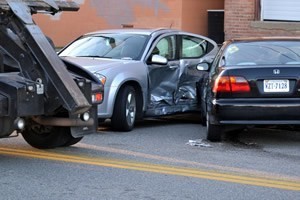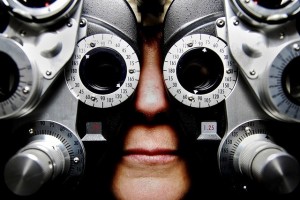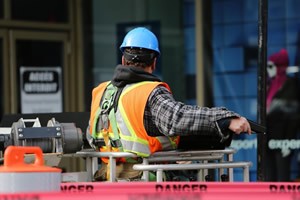
Dr. William Vigilante is a human factors expert who is commonly called upon to investigate the human factors associated with the following types of incidents, activities, and/or capabilities:
 Driver performance and driver actions are important aspects of any crash reconstruction investigation. However, the human factors related to a motor vehicle collision are often overlooked and/or misunderstood by the primary crash reconstruction investigator. To understand the role of driver performance as it relates to a motor vehicle collision, the investigator must have a firm grasp of the underlying human factors involved that affect visual perception, attention and memory, and driver decision making. Dr. Vigilante’s extensive training in human factors along with his years of experience investigating motor vehicle crashes uniquely qualify him to identify and understand the underlying factors that affect the driver’s performance and decision making. Dr. Vigilante applies his experience and skill to investigate motor vehicles crashes that involve many of the following circumstances or conditions:
Driver performance and driver actions are important aspects of any crash reconstruction investigation. However, the human factors related to a motor vehicle collision are often overlooked and/or misunderstood by the primary crash reconstruction investigator. To understand the role of driver performance as it relates to a motor vehicle collision, the investigator must have a firm grasp of the underlying human factors involved that affect visual perception, attention and memory, and driver decision making. Dr. Vigilante’s extensive training in human factors along with his years of experience investigating motor vehicle crashes uniquely qualify him to identify and understand the underlying factors that affect the driver’s performance and decision making. Dr. Vigilante applies his experience and skill to investigate motor vehicles crashes that involve many of the following circumstances or conditions:
- Cell phone use & Texting
- Driver distraction
- Drowsy driving
- Night driving & poor visibility conditions
- Lack of positive guidance and/or proper signage
Dr. Vigilante also investigates crashes that involve:
- Motorcycles and scooters
- Pedestrians
- Poor roadway lighting
- Slow Moving Vehicles
 Basic human performance issues should be assessed in the investigation of many incidents to determine if and/or how they many have played a role in the outcome of an event. These issues include topics such as:
Basic human performance issues should be assessed in the investigation of many incidents to determine if and/or how they many have played a role in the outcome of an event. These issues include topics such as:
- Accessibility & Disability
- Aging
- Attention & distraction
- Decision making / human information processing
- Memory & Knowledge
- Vision and Hearing
Dr. Vigilante utilizes his training and experience in the field of human factors to identify if and/or how any of these human factors played a role in the outcome of an event.
 Ease of use, usability, and user centered design are all terms used to describe designing for human use, the central tenant of the science of human factors and ergonomics. Latent hazards and induced errors are often the result of overlooking the user in the design of a product, machine, or piece of equipment. Human factors is important to both the design defect and failure to warn aspects of a product liability case. A design feature that affords the perception of a misuse is defective, just as a design feature that create a hidden hazard. When investigating a product liability claims, the following factors should be assessed:
Ease of use, usability, and user centered design are all terms used to describe designing for human use, the central tenant of the science of human factors and ergonomics. Latent hazards and induced errors are often the result of overlooking the user in the design of a product, machine, or piece of equipment. Human factors is important to both the design defect and failure to warn aspects of a product liability case. A design feature that affords the perception of a misuse is defective, just as a design feature that create a hidden hazard. When investigating a product liability claims, the following factors should be assessed:
- Control & Display Design
- Instructions & User Manuals
- Product Safety
- Risk Perception
- Warnings
Dr. Vigilante’s training and experience in both consumer and commercial product design in conjunction with his research on warnings and risk perception provides him the unique ability to address both design defect and failure to warn questions in product liability cases.
 Building codes, safety standards, and industry guidelines typically result in built environments free of walkway hazards and reasonably safe stairs. However, at times, slip, trip, and fall hazards are introduced into the environment. If the walkway hazard is not conspicuous or adequately warned, falls occur. Dr. Vigilante regularly investigates premises liability claims related to:
Building codes, safety standards, and industry guidelines typically result in built environments free of walkway hazards and reasonably safe stairs. However, at times, slip, trip, and fall hazards are introduced into the environment. If the walkway hazard is not conspicuous or adequately warned, falls occur. Dr. Vigilante regularly investigates premises liability claims related to:
- Conspicuity / Open and Obviousness
- Falls on Stairs
- Retail Store Safety
- Slip, Trip, and Falls
 Human factors related issues do not stop at the retail store, workplace, or product design. Human factors is also prevalent in recreational activities and settings. As an avid skier, swimmer, competitor shooter, and motorcycle enthusiast, Dr. Vigilante brings a unique perspective to cases involving the following sporting and recreational activities:
Human factors related issues do not stop at the retail store, workplace, or product design. Human factors is also prevalent in recreational activities and settings. As an avid skier, swimmer, competitor shooter, and motorcycle enthusiast, Dr. Vigilante brings a unique perspective to cases involving the following sporting and recreational activities:
- ATVs and UTVs
- Boating and watercraft
- Firearms & Shooting
- Motorcycling
- Skiing & Winter Sports
- Swimming Pools
 The three main cores of human factors and ergonomics is user efficiency/productivity, comfort, and safety. Whether the issue is lifting capacity or noise exposure, human factors and ergonomics should be a standard cornerstone to any workplace safety program to ensure the health and well being of employees. Throughout his professional career, Dr. Vigilante has experience investigating work place safety incident involving:
The three main cores of human factors and ergonomics is user efficiency/productivity, comfort, and safety. Whether the issue is lifting capacity or noise exposure, human factors and ergonomics should be a standard cornerstone to any workplace safety program to ensure the health and well being of employees. Throughout his professional career, Dr. Vigilante has experience investigating work place safety incident involving:
- Audible & Backup Alarms
- Cold & Heat Stress
- Fatigue & Sleep deprivation
- Forklifts & Industrial Trucks
- Lifting
- Training & Instructions
- Warning Signs
 Warnings are an important part of hazard mitigation. If, and when, hazards can not be eliminated or guarded, warnings should be provided to alert and inform product users, patrons, and guests of a specific hazard, how to avoid it, and the consequences of failing to heed the warning. Effective warnings are needed to change behavior, improve safety, provide informed consent, and remind people of things they may already known but are not currently thinking about.
Warnings are an important part of hazard mitigation. If, and when, hazards can not be eliminated or guarded, warnings should be provided to alert and inform product users, patrons, and guests of a specific hazard, how to avoid it, and the consequences of failing to heed the warning. Effective warnings are needed to change behavior, improve safety, provide informed consent, and remind people of things they may already known but are not currently thinking about.
Dr. Vigilante has been researching the factors that affect the adequacy of warnings and how people perceive risks for over 20 years. Dr. Vigilante is available to assess the adequacy of on-product warnings, user manuals and instructions, and posted warning signs as well as the interpersonal and intrapersonal factors that may affect compliance to a given warning.
